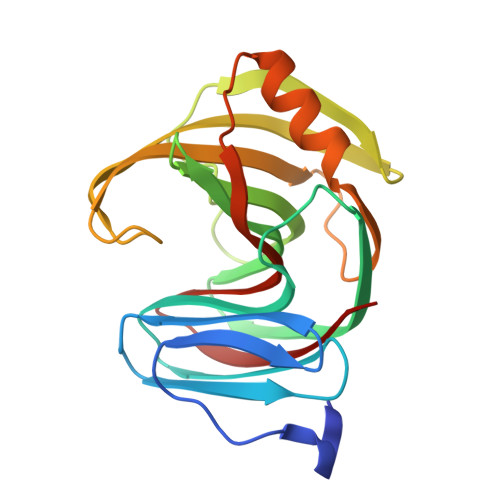Unleashing the Power of Evolution in Xylanase Engineering: Investigating the Role of Distal Mutation Regulation.
Wu, Y., Yang, Y., Lu, G., Xiang, W.L., Sun, T.Y., Chen, K.W., Lv, X., Gui, Y.F., Zeng, R.Q., Du, Y.K., Fu, C.H., Huang, J.W., Chen, C.C., Guo, R.T., Yu, L.J.(2024) J Agric Food Chem 72: 18201-18213
- PubMed: 39082219
- DOI: https://doi.org/10.1021/acs.jafc.4c03245
- Primary Citation of Related Structures:
8XZX, 8XZY, 8XZZ, 8Y00 - PubMed Abstract:
The drive to enhance enzyme performance in industrial applications frequently clashes with the practical limitations of exhaustive experimental screening, underscoring the urgency for more refined and strategic methodologies in enzyme engineering. In this study, xylanase Xyl-1 was used as the model, coupling evolutionary insights with energy functions to obtain theoretical potential mutants, which were subsequently validated experimentally. We observed that mutations in the nonloop region primarily aimed at enhancing stability and also encountered selective pressure for activity. Notably, mutations in this region simultaneously boosted the Xyl-1 stability and activity, achieving a 65% success rate. Using a greedy strategy, mutant M4 was developed, achieving a 12 °C higher melting temperature and doubled activity. By integration of spectroscopy, crystallography, and quantum mechanics/molecular mechanics molecular dynamics, the mechanism behind the enhanced thermal stability of M4 was elucidated. It was determined that the activity differences between M4 and the wild type were primarily driven by dynamic factors influenced by distal mutations. In conclusion, the study emphasizes the pivotal role of evolution-based approaches in augmenting the stability and activity of the enzymes. It sheds light on the unique adaptive mechanisms employed by various structural regions of proteins and expands our understanding of the intricate relationship between distant mutations and enzyme dynamics.
- Institute of Resource Biology and Biotechnology, Department of Biotechnology, College of Life Science and Technology, Huazhong University of Science and Technology, 1037 Luoyu Road, Wuhan 430074, China.
Organizational Affiliation:




















